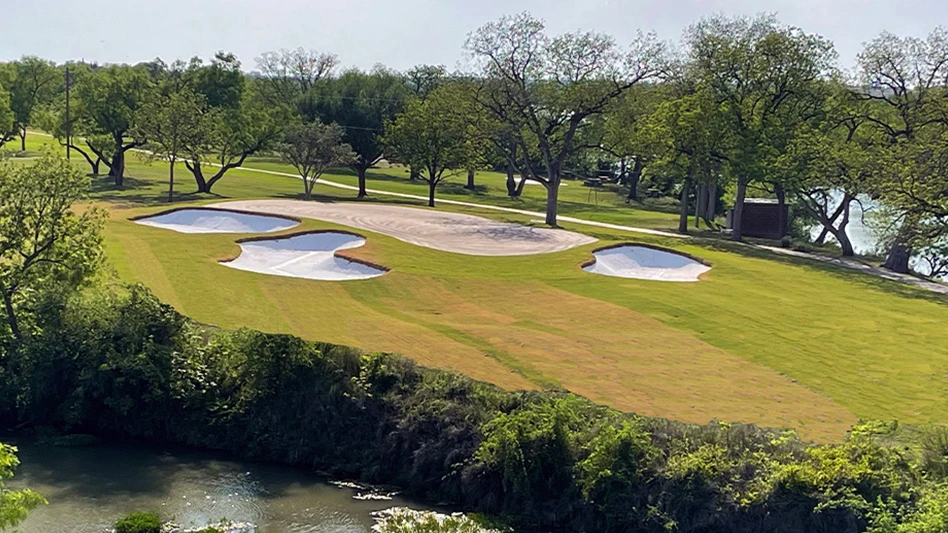Earthworms, which are common throughout the world in various ecosystems, are good and bad for turfgrass on a golf course. With a management strategy, superintendents can make them less of a nuisance yet benefit from them to improve soil.
|
|
Of the more than 8,000 species that exist, 50 are found in the United States, three live in turf, two of the three turf species create castings, and Lumbricus terrestris L. is the most common in the United States, according to Chris Williamson, Ph.D., from the University of Wisconsin.
Williamson spoke at the Ohio Turfgrass Foundation’s conference and trade show in Columbus, Ohio, Dec. 6 through 8.
Earthworms, which require adequate soil moisture and organic matter, are considerably less abundant in sandy soils, most likely because of the abrasive texture of the sand, according to Williamson. So he decided to conduct research about suppressing castings. His goal wasn’t to kill earthworms, but to alter or modify their behavior so earthen casts were substantially reduced.
The site of Williamson’s study was Blackhawk Country Club in Madison, Wis. The creeping bentgrass/Poa annua fairways had a long history of earthworms. They were mowed three to four days a week at 7/16 of an inch with a Toro 5200 fiveplex and were irrigated 1/15 of an inch per day and/or as needed to replace evapotranspiration. There was about 40 percent shade. The treatments were:
· Wetting agent;
· Black Jack (coal slag);
· Organic mustard;
· Water injection;
· Angular topdressing material;
· Dishwashing soap;
· Fungicide (thiophanate-methyl); and
· Insecticide (carbaryl).
Williamson made clear that because earthworms are largely considered beneficial organisms, no pesticides are registered or can be applied legally to control them.
After testing the treatments, Williamson came to the conclusion that there was no silver bullet, but the coal slag provided good control.
The next round of treatments included coal slag applied at different rates and different times, Amber Jack (a byproduct of the paper mill industry) applied at different times of the year, Best Sand (crushed quartz) and thiophanate-methyl at different rates.
The results of the second testing indicated that the Amber Jack, coal slag and Best Sand all were comparable and reduced the number of casts. Williamson also found it was better to apply Black Jack in sequential applications during the spring and fall because the earthworms were more abundant during those times because of the air and soil temperatures.
Despite the casting control, concerns arise. Using Amber Jack and Black Jack could damage the bedknives, but Williamson didn’t have data on that. Also, Amber Jack and Black Jack might cause tears on the leaf of the turfgrass, causing the turf to be more prone to disease.
But the bottom line is that no management strategy or control measure will completely eliminate earthworm castings. However, they can be reduced to a tolerable level by implementing one or a combination of management strategies. GCN

Explore the January 2006 Issue
Check out more from this issue and find your next story to read.
Latest from Golf Course Industry
- KemperSports taps new strategy EVP
- Audubon International marks Earth Day in growth mode
- Editor’s notebook: Do your part
- Greens with Envy 66: A Southern spring road trip
- GCSAA’s Rounds 4 Research auction begins
- Quali-Pro hires new technical services manager
- KIOTI Tractor boosts sales leadership, introduces compact loaders system
- Envu adds three new sales managers






